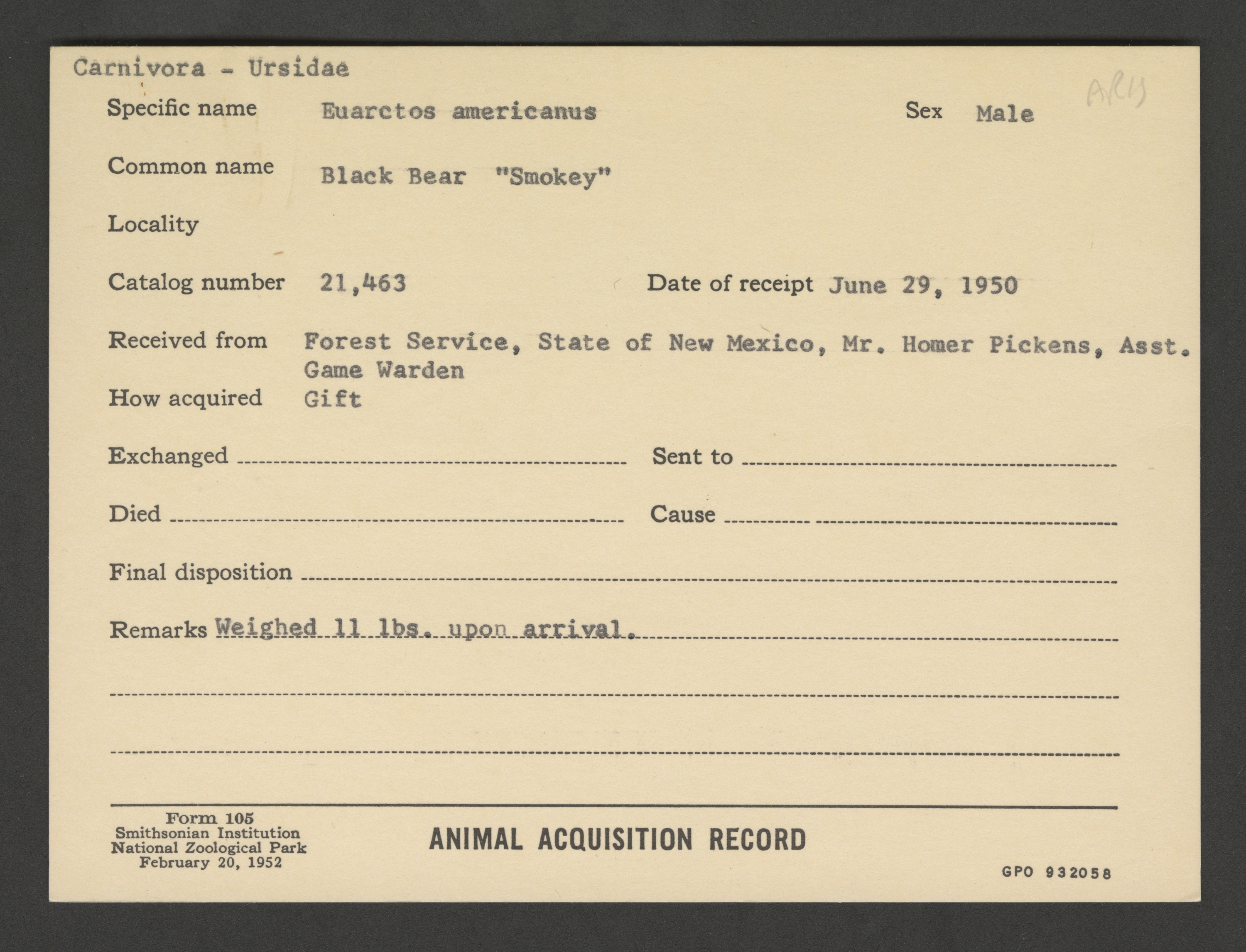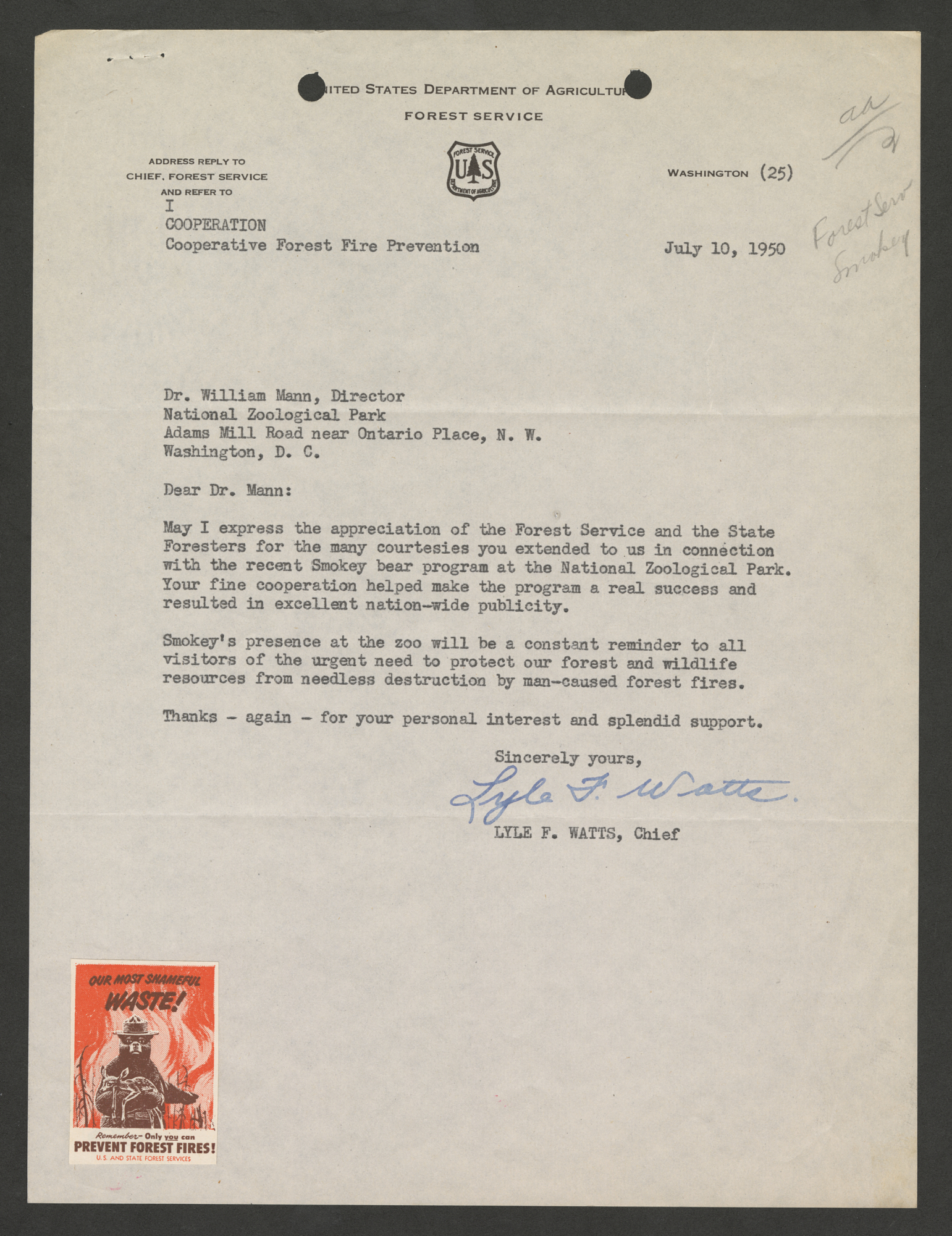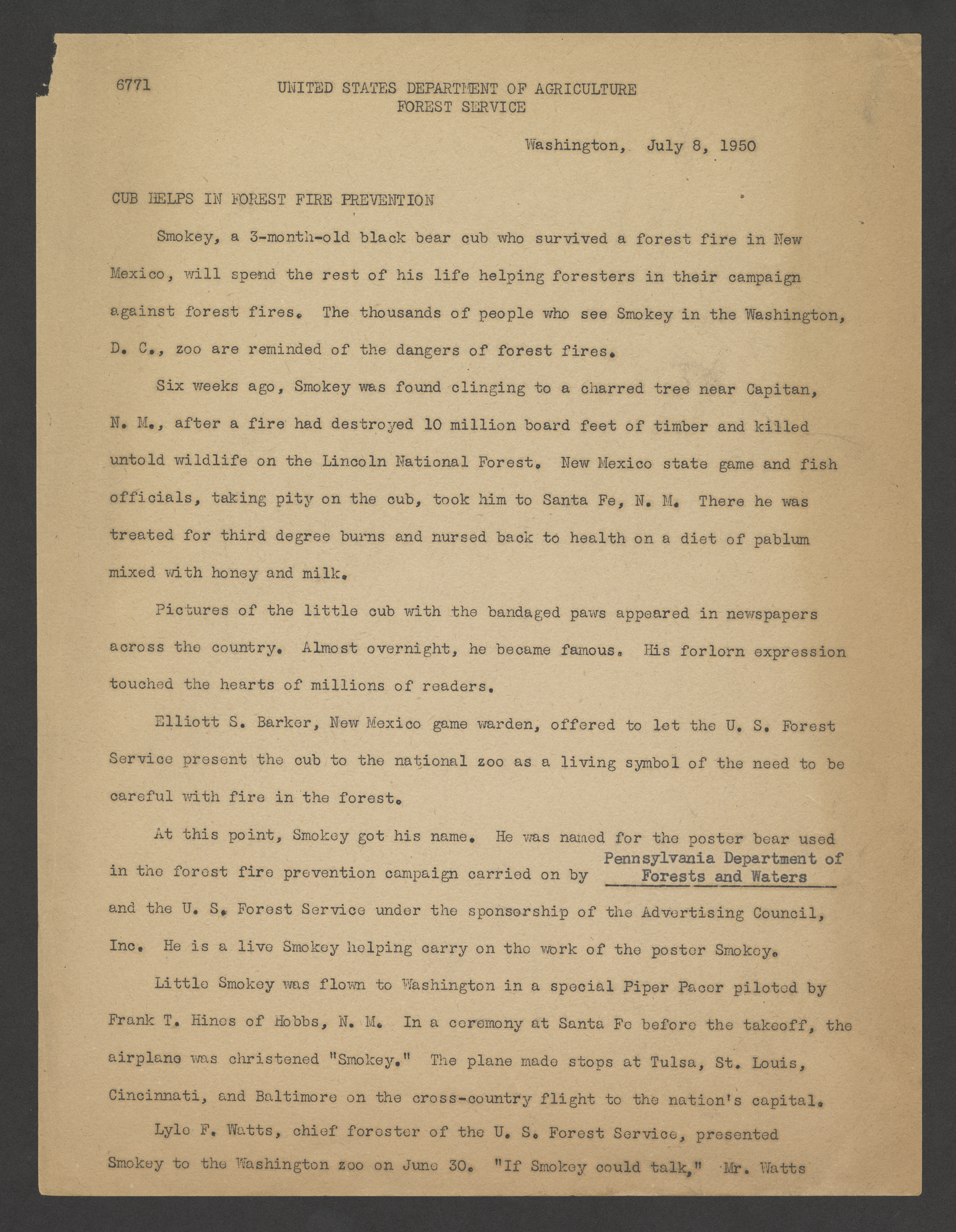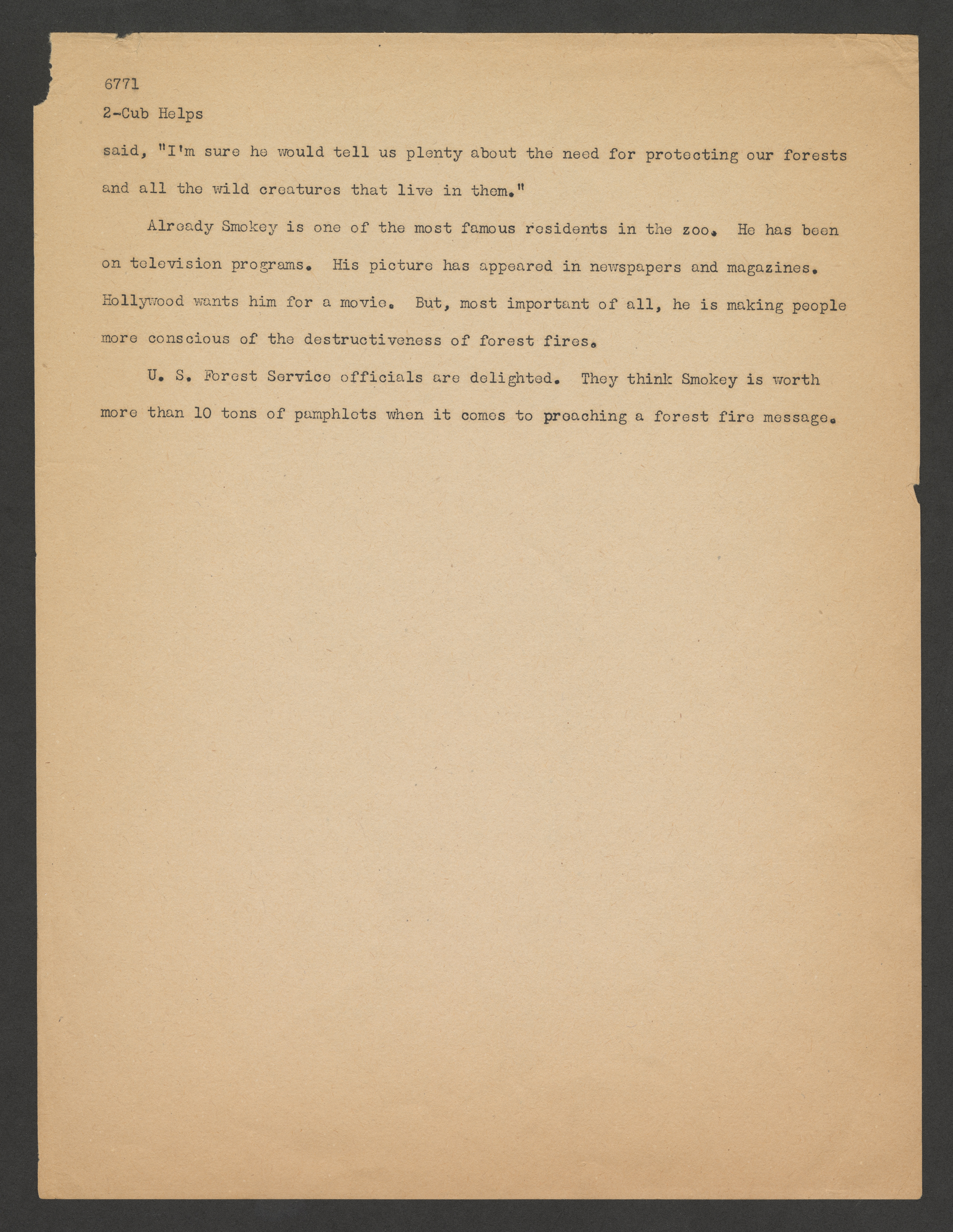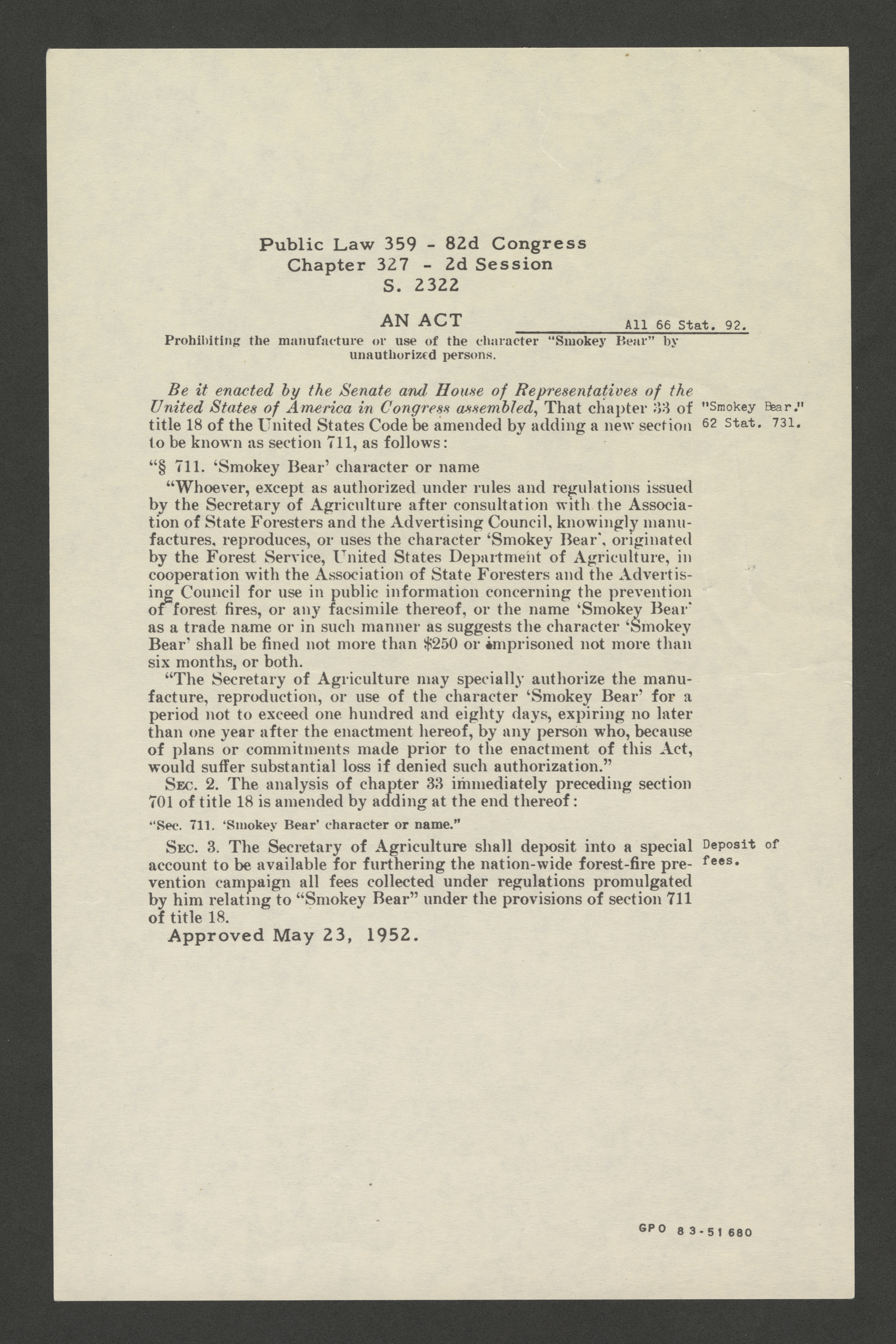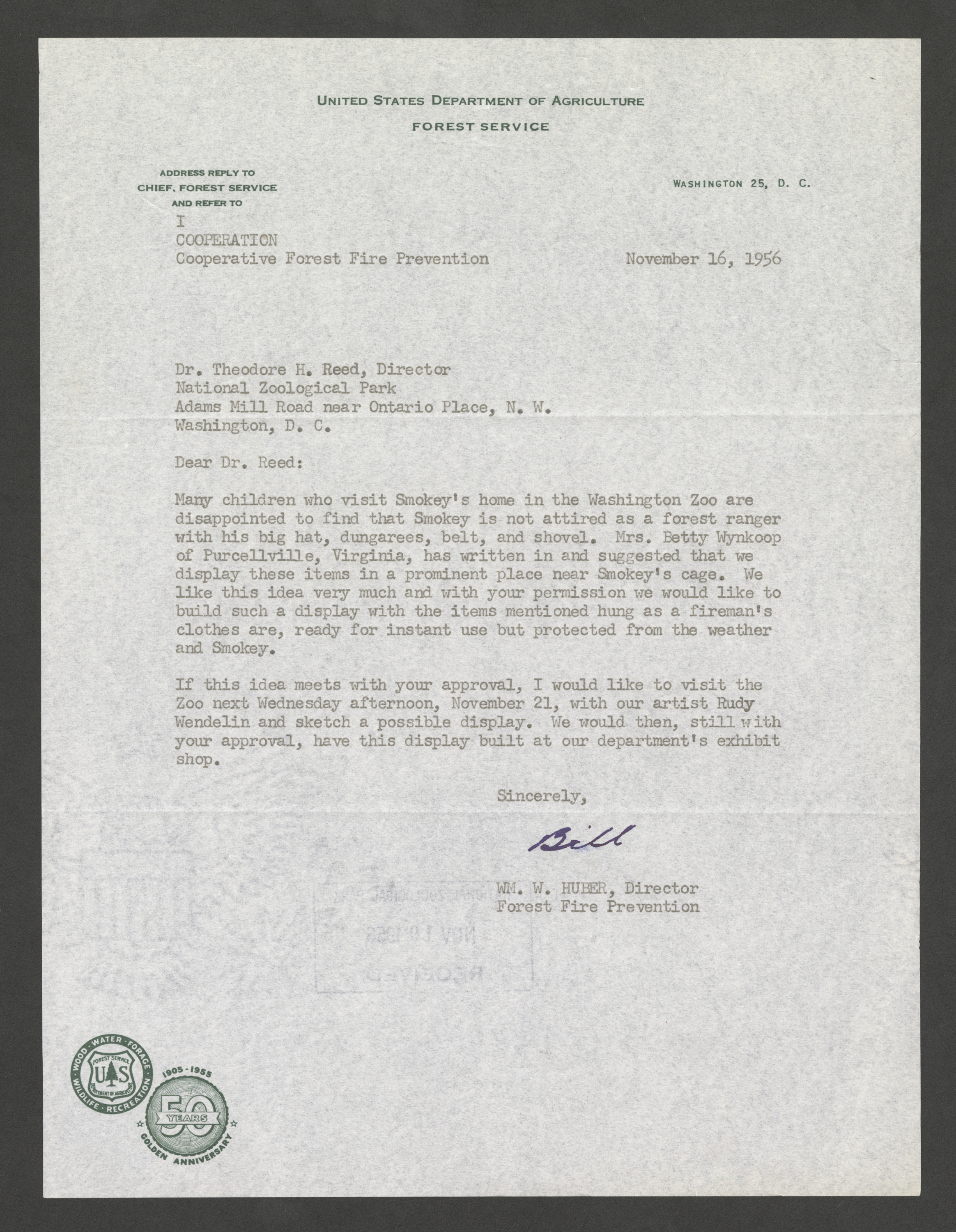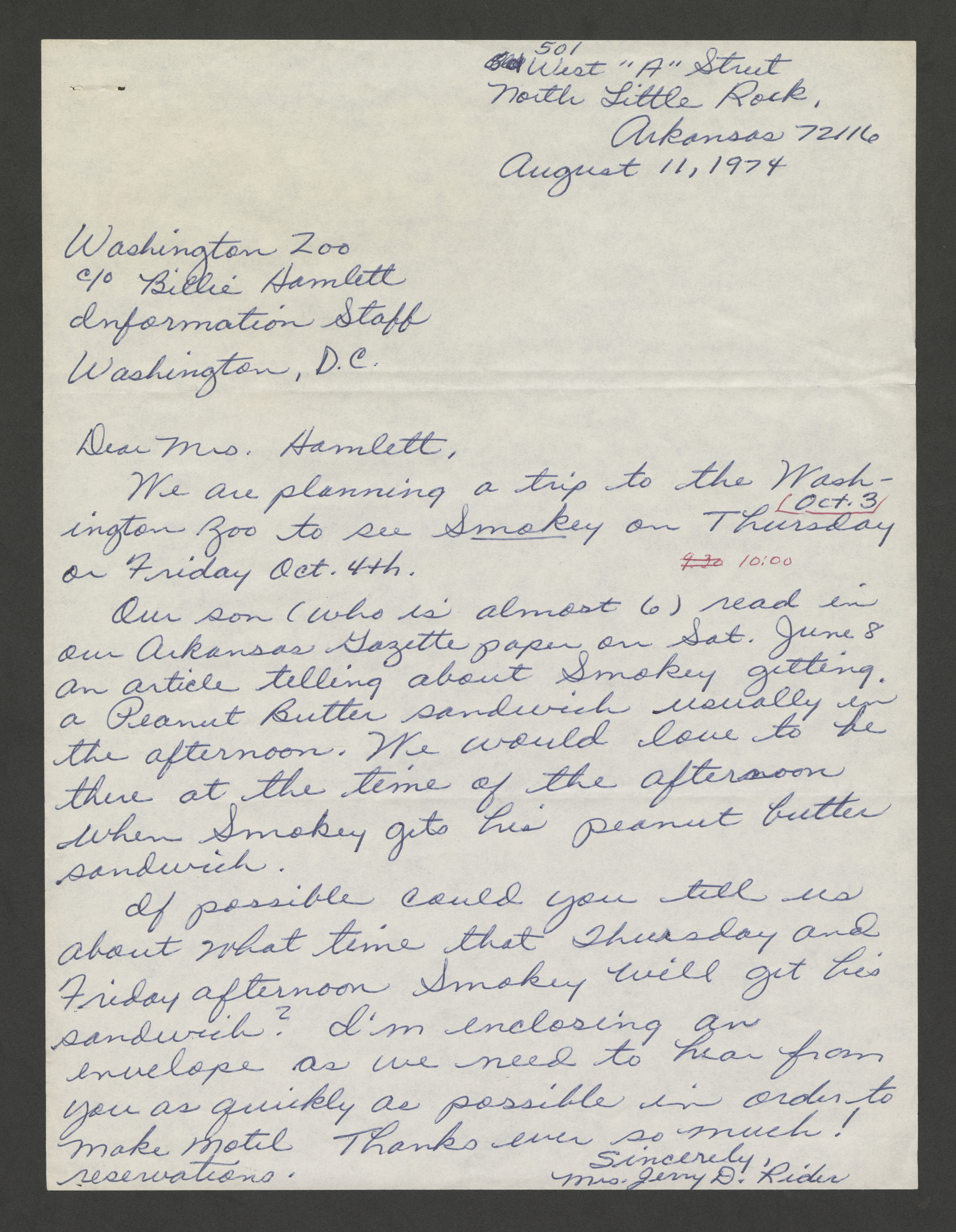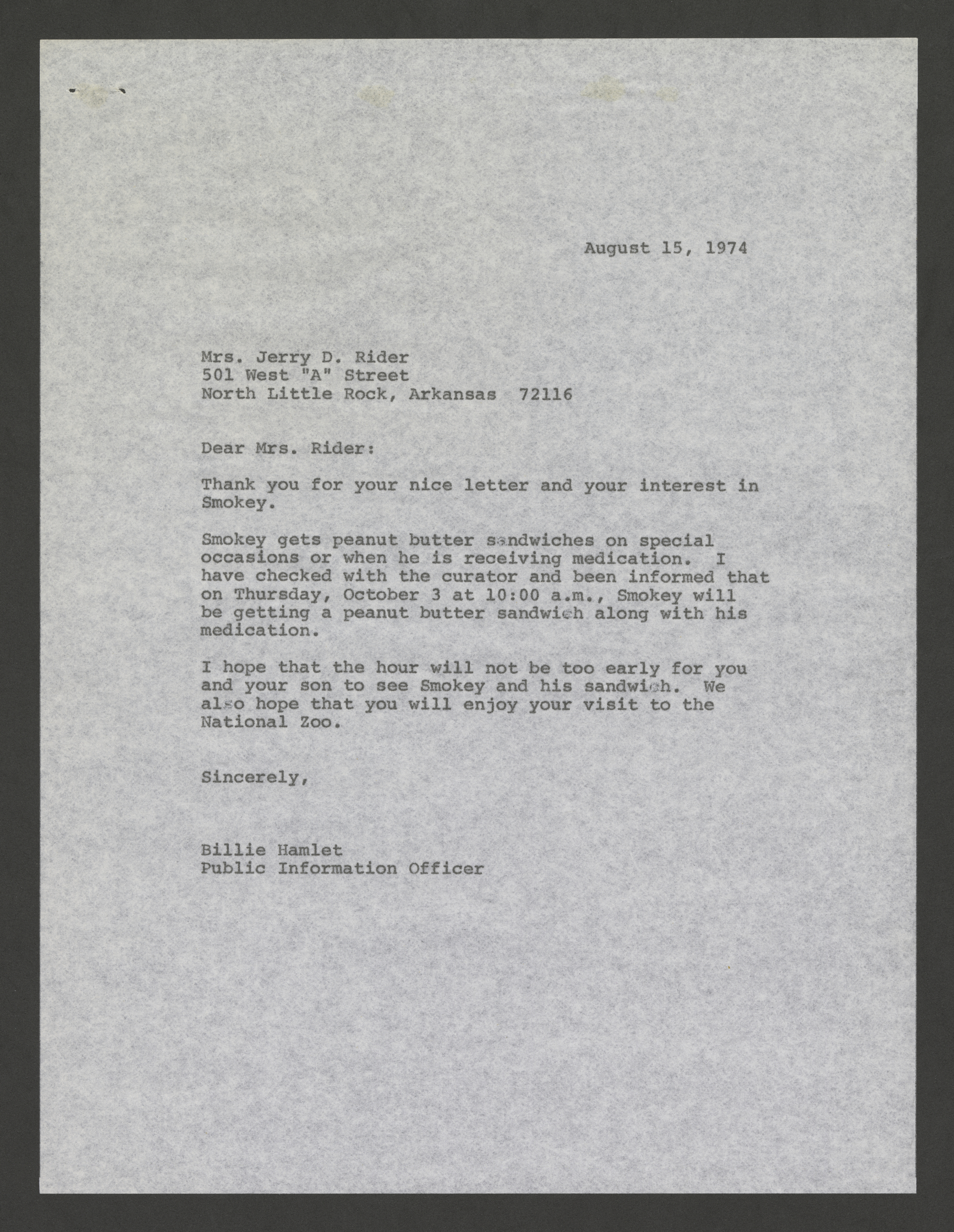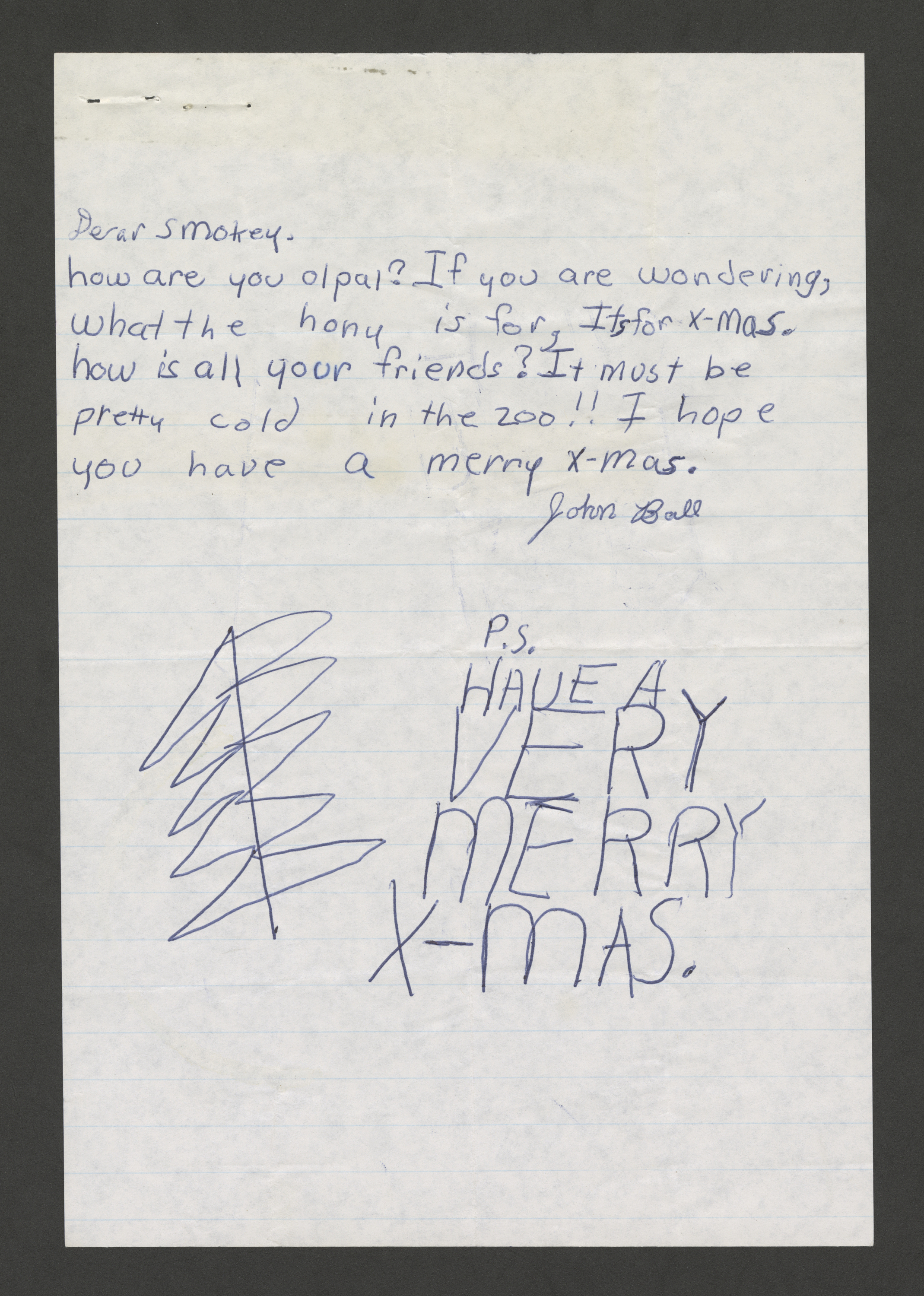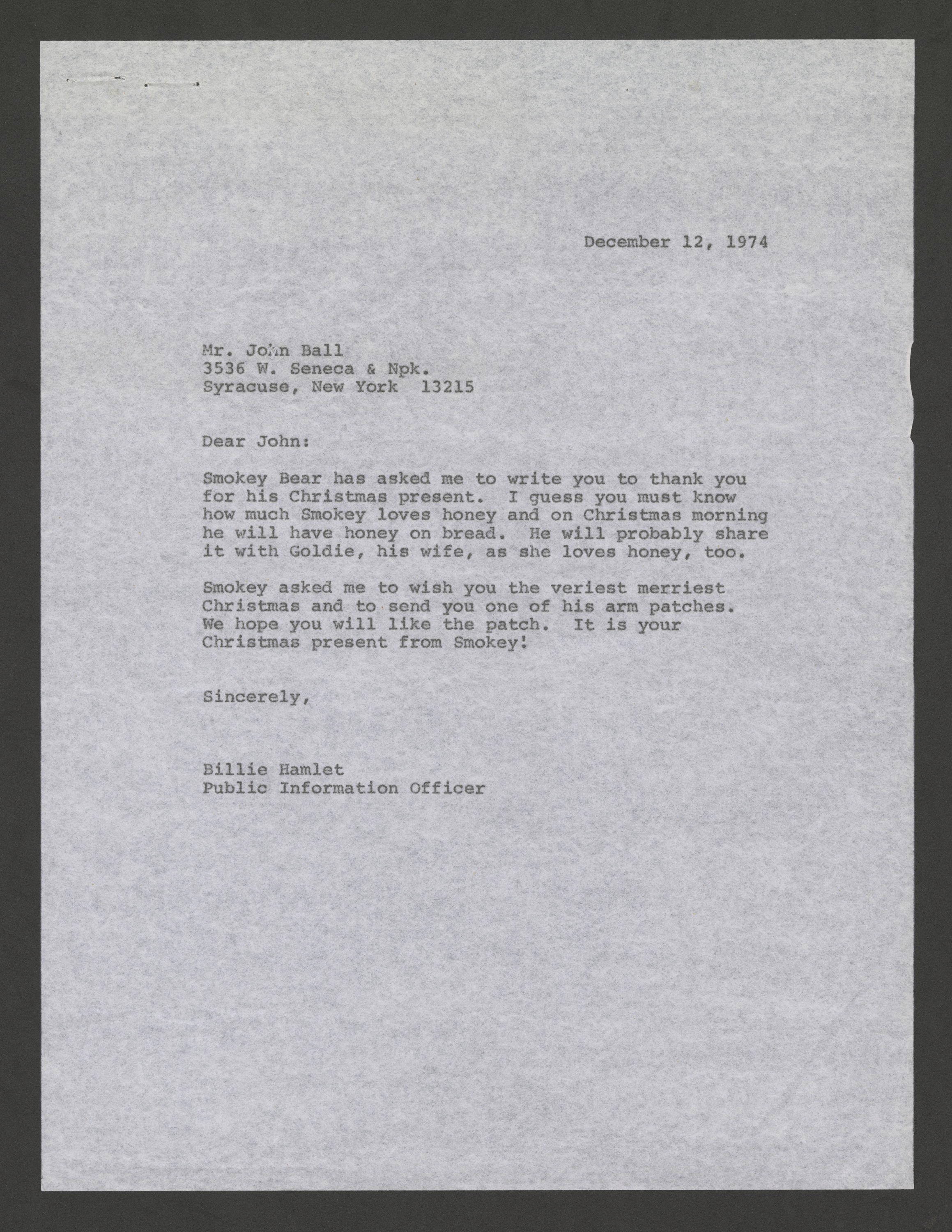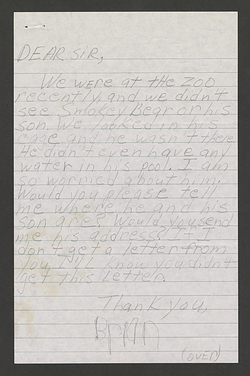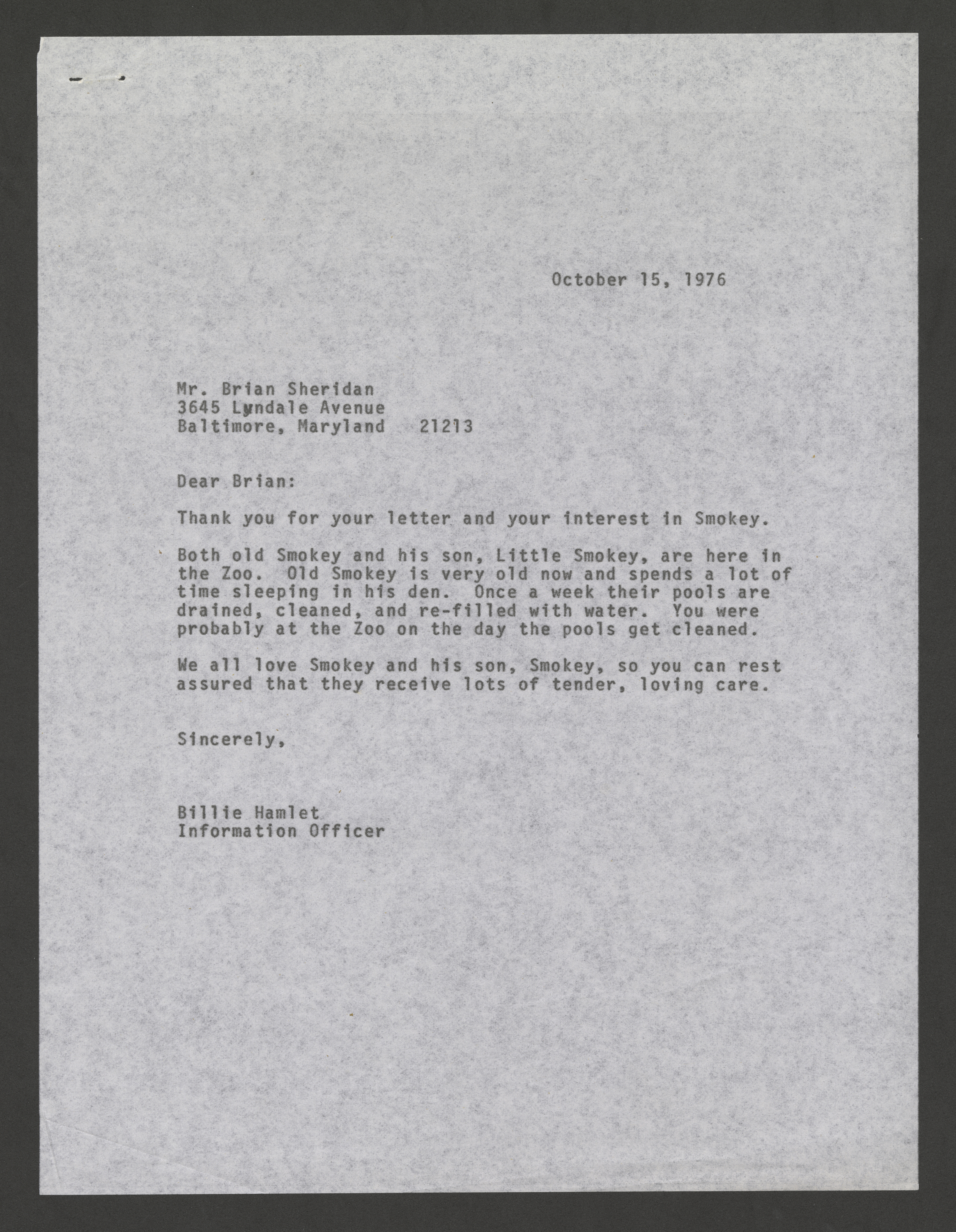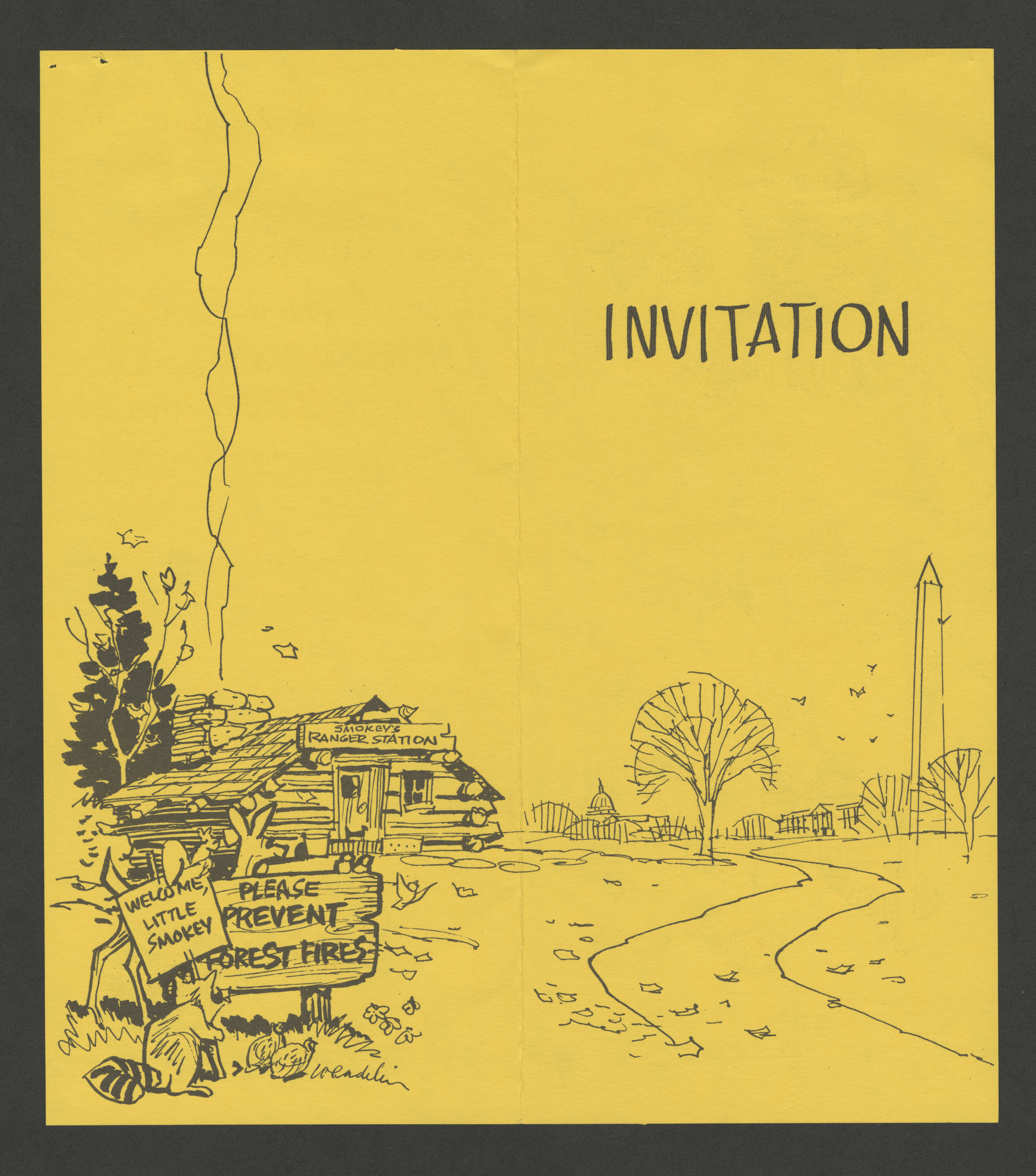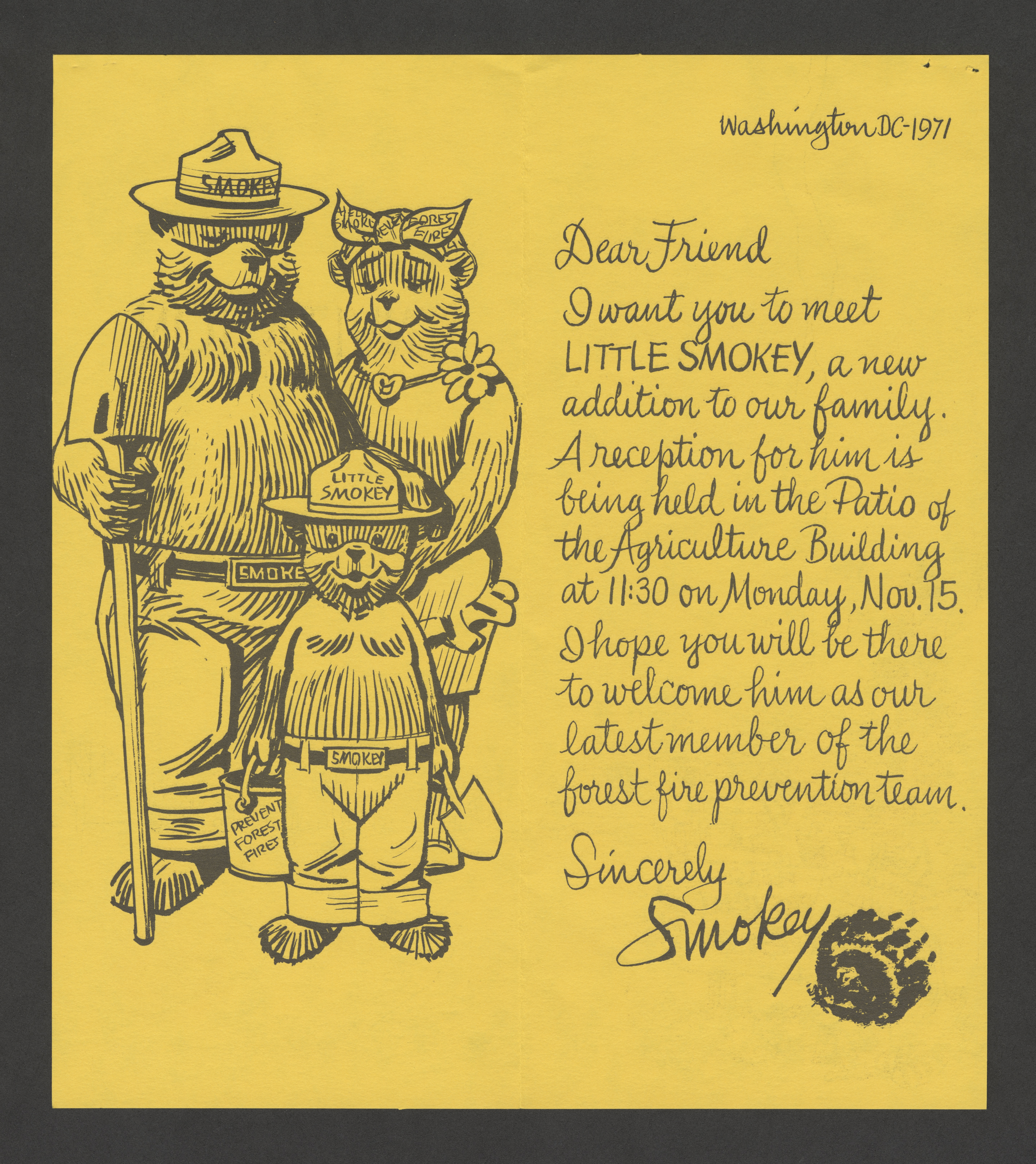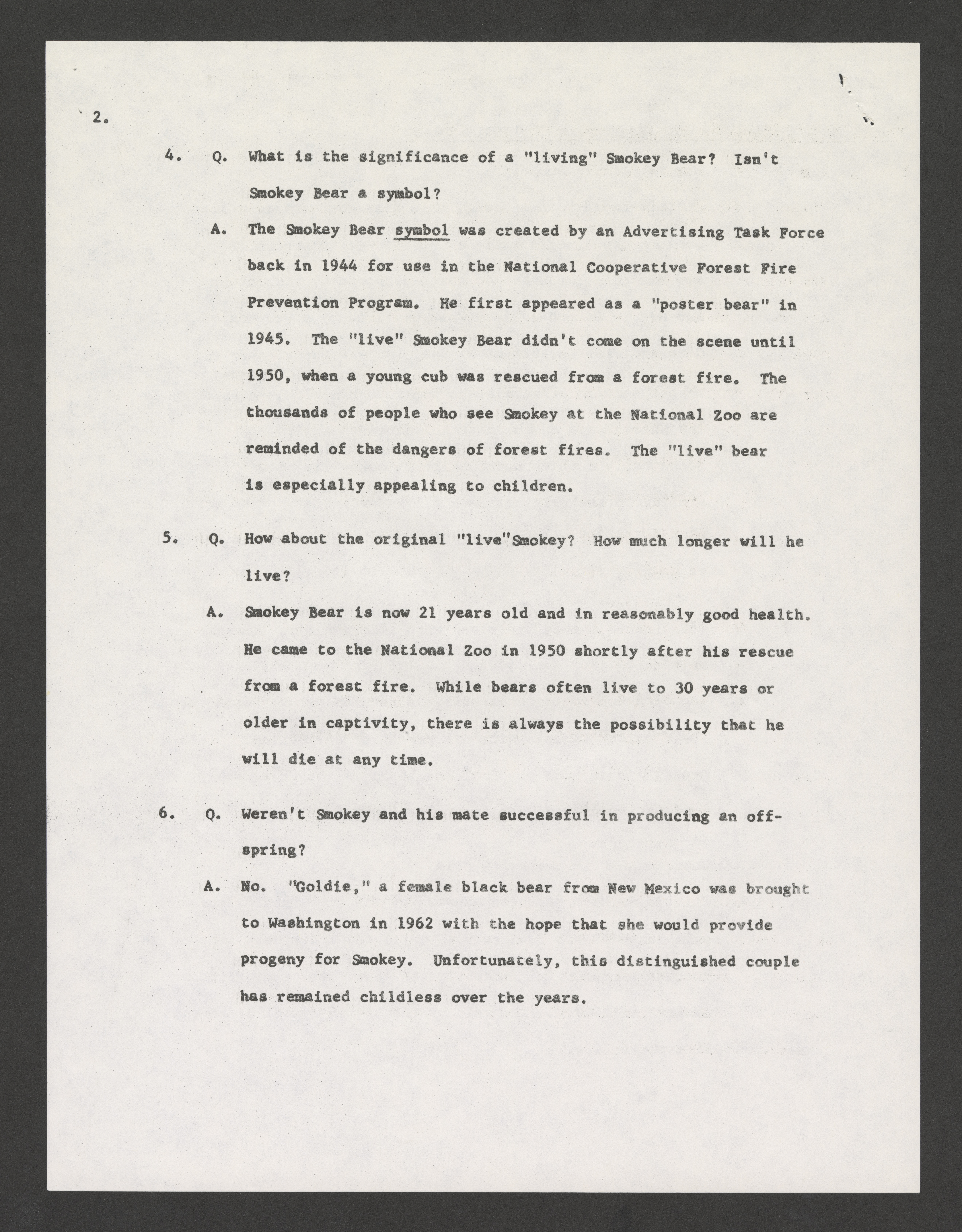2019 marks the 75th anniversary of Smokey Bear, and, considering the rise in wildfires during the past decade, Smokey and his message of wildfire prevention and wildlife preservation is needed now more than ever. The U. S. Forest Service maintains a very informative website regarding Smokey’s history and a wealth of wildfire statistics may be found on the National Interagency Fire Center website.
Smokey Bear, the character, was created by the Forest Service in August 1944 as the lead symbol in its Wildfire Prevention Campaign. In the aftermath of the Japanese attack on Pearl Harbor (December 7, 1941) there was growing concerns among Americans that a similar assault on the American west coast could spark devastating wildfires, consuming vital natural and human resources at a time when there was a certain absence of the latter, as many citizens were contributing to the war effort abroad. Furthermore, and perhaps even more importantly, fires started by careless citizens within the U.S. had become a growing problem. Forest Service officials searched for ways to make citizens who visited our National Forests more conscious of the serious damage that could be caused by haphazardly tossing away a match or not ensuring a campfire was completely extinguished. They launched an advertising campaign to raise awareness and promote responsibility, using a bear as the logo. Whether in print, on television, or as a sound bite, the bear pointed at and/or spoke sternly to the public, stating the now famous slogan while emphasizing the responsibility of each individual, “Only YOU can prevent forest fires.”
While the Forest Service created Smokey Bear as a fictional character for its wildfire prevention campaign, there soon was a real, living Smokey Bear, himself the victim of a forest fire as a young cub. Smokey was born in 1950 in the Lincoln National Forest in New Mexico. Members of the New Mexico Game and Fish Department, who were battling wildfires in the Capitan Mountain region, found the bear cub clinging to a charred pine tree, the soles of his feet badly burned, his hind legs and hair singed. He weighed all of five pounds, and his future appeared dim. Despite the odds for survival, he was nursed back to health by veterinarians in Santa Fe, New Mexico. In June of 1950 the Forest Service transferred Smokey to the Smithsonian with the stipulation that his life be devoted to forest fire prevention and wildlife conservation. The National Zoological Park in Washington, D.C., agreed to give Smokey a permanent home.
Transporting Smokey to the National Zoological Park proved to be a challenge. Commercial airlines would not allow Smokey in the passenger cabin, nor would they permit a person to accompany him in the baggage compartment. Fortunately, Bill Piper, owner of the Piper Aircraft Company became aware of this dilemma, and offered a Piper Cruiser to serve as Smokey’s private airplane. Traveling in style with his own seat in the “cabin,” the plane was personalized and adorned with a mural of Smokey with his paw in a sling and ranger hat on his head. The St. Louis Zoo reserved a special room for Smokey during an overnight fuel stop, and several hundred spectators, including members of the Boy Scouts, Girl Scouts, photographers, and media were awaiting his arrival in Washington, DC on June 27, 1950.
There is a replica of Smokey’s plane at the Flight of the Phoenix Aviation Museum. The original Piper Pacer that transported Smokey to Washington DC was destroyed in an unfortunate aviation accident.
![American Black Bear "Smokey Bear" at National Zoological Park, 1973, Smithsonian Institution Archives, SIA Acc. 11-009 [73-3885]. American Black Bear "Smokey Bear" at National Zoological Park](https://ids.si.edu/ids/iiif/SIA-73-3885/full/500,/0/default.jpg)
Smokey was an American Black Bear (Ursus americanus.) He weighed eleven pounds when he arrived in Washington, D.C. and grew to just over 300 pounds in adulthood. He was a main attraction during his time (1950 – 1976) at the National Zoo, drawing millions of visitors annually. Smokey was so popular that he received more than 13,000 pieces of fan mail each week, reportedly requiring three “Assistants” to answer all the mail, and earning him his own zip code, 20252. He developed a love for peanut butter sandwiches, in addition to his daily diet of bluefish, trout, and his favorite, butterfish.
Children in particular were excited to see and meet Smokey, although many imagined him as the talking, humanlike cartoon they saw in print and on their television screen. Some were disappointed upon viewing a real bear, and questioned why he was not in his usual uniform! The Park Service, which managed most of Smokey’s publicity, created a special exhibit case adjacent to his cage, featuring his Park Service uniform; his signature “ranger” hat (this style of hat remains part of the Park Service Ranger uniform, and is widely known as the “Smokey Bear” hat,) shovel, baggy blue jeans with generous cuffs, and of course, a jar of honey!
In contrast to his considerable fame, Smokey was somewhat of an introvert, preferring solitude over attention, and was not necessarily active enough for the expectations of some visitors. Goldie, a female black bear, was brought to the zoo in 1962 as a mate for Smokey, with hope that she would encourage him to be a bit more active and the two would develop a partnership. Despite efforts, no offspring were produced. In 1971, the zoo acquired “Little Smokey,” who also was born in the Lincoln National Forest but was not the victim of fire, though he was orphaned and rescued from starvation by the Forest Service. Little Smokey would carry the torch of his namesake, who was nearing retirement (Smokey would turn twenty-five in 1975, which is the equivalent to roughly seventy human years, the mandatory retirement age for federal employees in those days.)
Smokey officially retired on May 2, 1975 in a ceremony which anointed Little Smokey as Smokey Bear II. He remained at the National Zoological Park until his passing on November 9, 1976. A Congressional resolution in 1974 stipulated that Smokey’s remains would be returned to New Mexico, where he would be buried at the Smokey Bear Historical Park in Capitan, NM, not far from where he was found twenty-six years prior. More than 250 people were on hand for his memorial service, and he received an official obituary on the front page of the November 11, 1976 edition of the Wall Street Journal. During his lifetime, his likeness appeared on millions of pieces of fire prevention literature and products, and countless hours of broadcast advertisements. Further statistics on the impact of Smokey bear and The Forest Service’s Fire Prevention Campaign are included below.
- The Forest Service distributed more than 30,000,000 pieces of fire prevention materials annually during the period 1944–1976.
- Forest fires caused by humans were reduced by more than 25% from 201,511 such fires in 1942, to less than 145,868 forest fires in 1974, notwithstanding the rapid development within the United States, and a 63% increase in population during this time period.
- Acreage of forest burned annually dropped from 31,000,000 acres to less than 3,000,000 acres while Smokey Bear was on patrol.
- It was estimated that Smokey Bear saved more than $16 million in timber that did not burn, public recreation areas that were unharmed by fire, and watersheds that were not scorched.
- Smokey’s image appeared on more than $8 million worth of products annually (c. 1944–1975.)
- More than $45 million in air time and print space was donated annually by media outlets (c. 1944–1975.)

Further Exploration
- Historic Images of Smokey Bear
- Bearly Survived to Become an Icon, by Tad Bennicoff, The Bigger Picture, Smithsonian Institution Archives
- Forest Service Smokey Bear webpage

